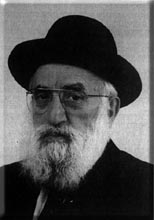Beit Midrash
- Shabbat and Holidays
- Purim & The Month of Adar
- The Laws of Purim
- Sections
- Peninei Halakha
At the time of the Purim story, the Jewish people was in dire straits. The First Temple had been destroyed, and Israel had been exiled from its land. While Cyrus’s edict permitting the Jews to return to their land had already been declared, only a small minority actually did so. The Persian Empire ruled the world, and the large Jewish population living throughout the empire made an effort to assimilate and behave as the gentiles did, to the point where many were willing to bow down to an idol. In the capital city of Shushan, many Jews partook in Aĥashverosh’s feast and looked on as the Persians brought out the Temple vessels, which our enemies had pillaged at the time of the Temple’s destruction, and used them for mundane purposes. Yet they still enjoyed this wicked man’s feast. It seemed as though the great vision for which the nation of Israel was chosen was steadily vanishing; there would no longer be hope for a return to Zion. The Jewish people would no longer bring the word of God to the world.
Then, a great accusation arose in heaven against Israel. Despite the fact that God chose Israel from among all the other nations, gave them His Torah, and manifested His presence in their midst, they were acting like the gentiles, bowing to an idol, and failing to go up to their land to build the Holy Temple. Therefore, the wicked Haman, a descendant of Amalek, arose and instigated the Persian Empire to enact a terrible decree against the Jews, the likes of which had never been seen before: "To destroy, massacre, and exterminate all the Jews, young and old, children and women, on a single day, on the thirteenth day of the twelfth month – that is, the month of Adar – and to plunder their possessions" (Esther 3:13).
Incidentally, some Jews claimed against Mordechai that he was the cause of the evil decree: By refusing to bow to the wicked Haman, he stirred his wrath against all the Jews (ibid. 3:2-6).
Ultimately it became clear that God controls events and had even already prepared the solution to the problem in advance, by arranging for Aĥashverosh to marry Esther. Thus, Mordechai and Esther were able to thwart Haman’s plan. Everything was reversed: Instead of Israel’s enemies carrying out their evil scheme, the Jews were able to kill their enemies, even hanging Haman and his sons on the very tree that he had prepared for Mordechai. The people of Israel experienced a great salvation; their prestige grew among the nations; and they mustered the strength to ascend to Eretz Yisrael, settle it, and build the Second Temple. 1
^ 1.It emerges from Megilla 11b-12a that the Purim story happened after Cyrus’s edict but before the Jews were permitted to build the Temple. Furthermore, the evil decree was issued because they bowed down to an idol and derived pleasure from the wicked king’s feast. Many claim that Darius was the son of Aĥashverosh and Esther, and that thanks to Esther’s influence, Darius allowed the Second Temple to be completed after the enemies of the Jews disrupted its construction.






















